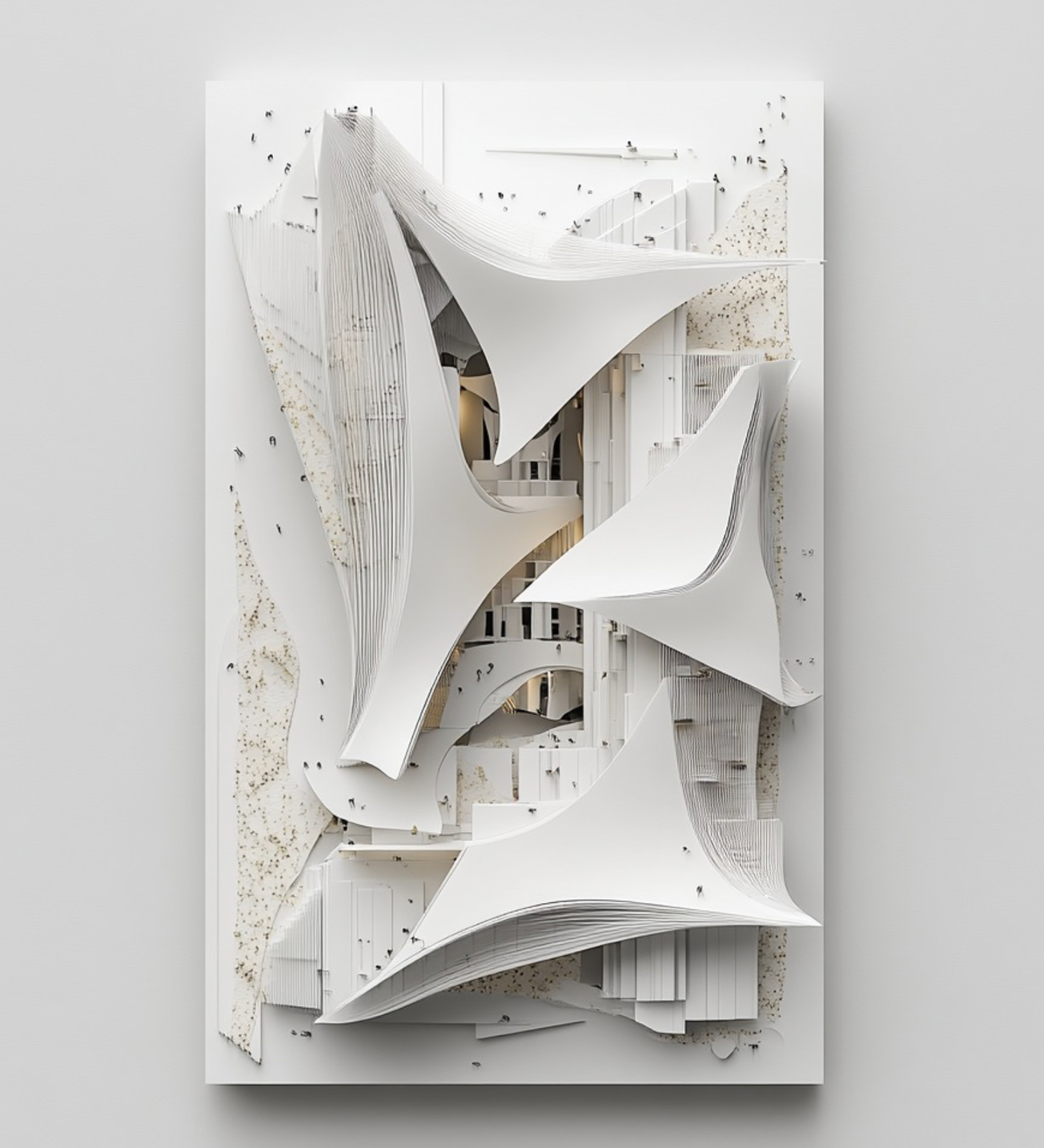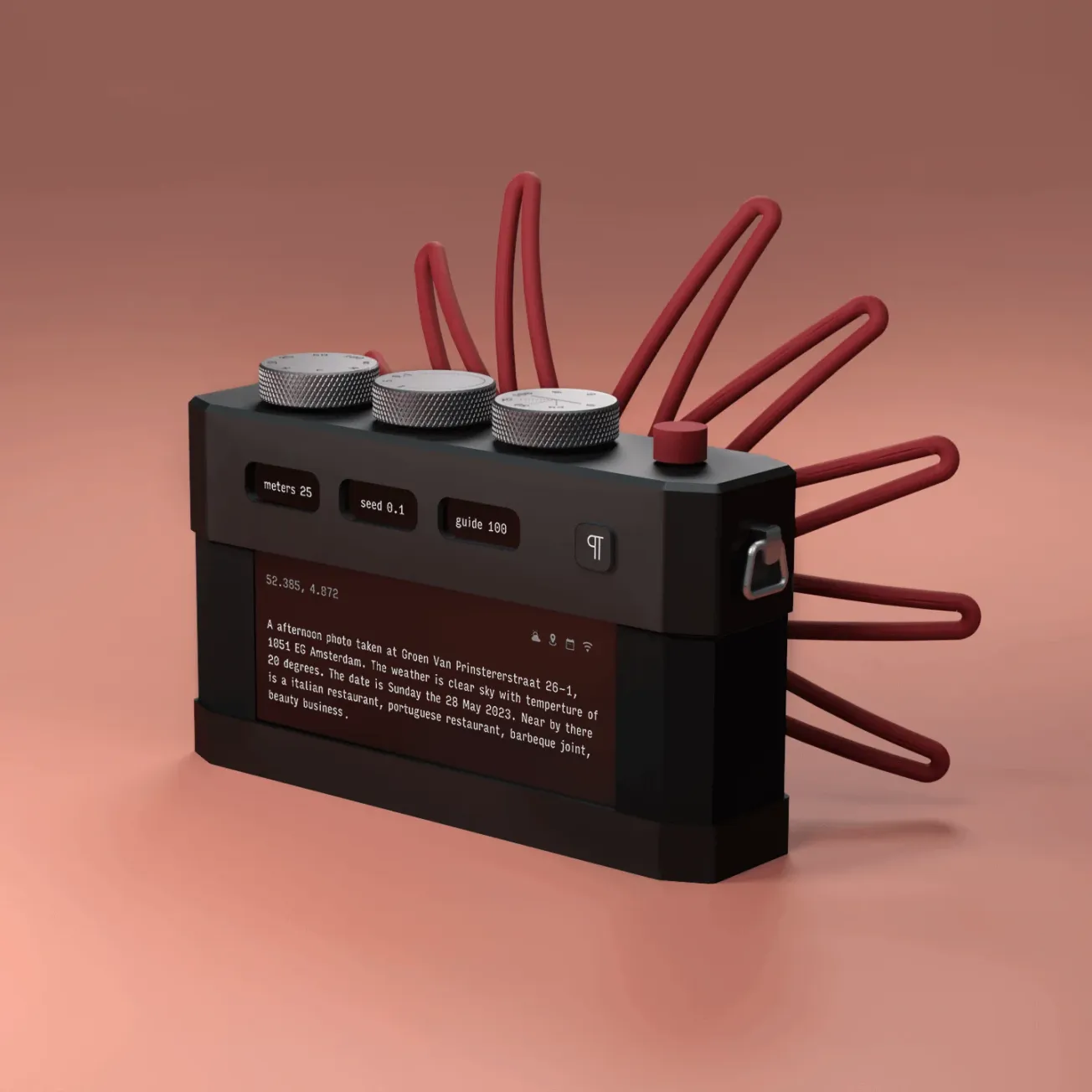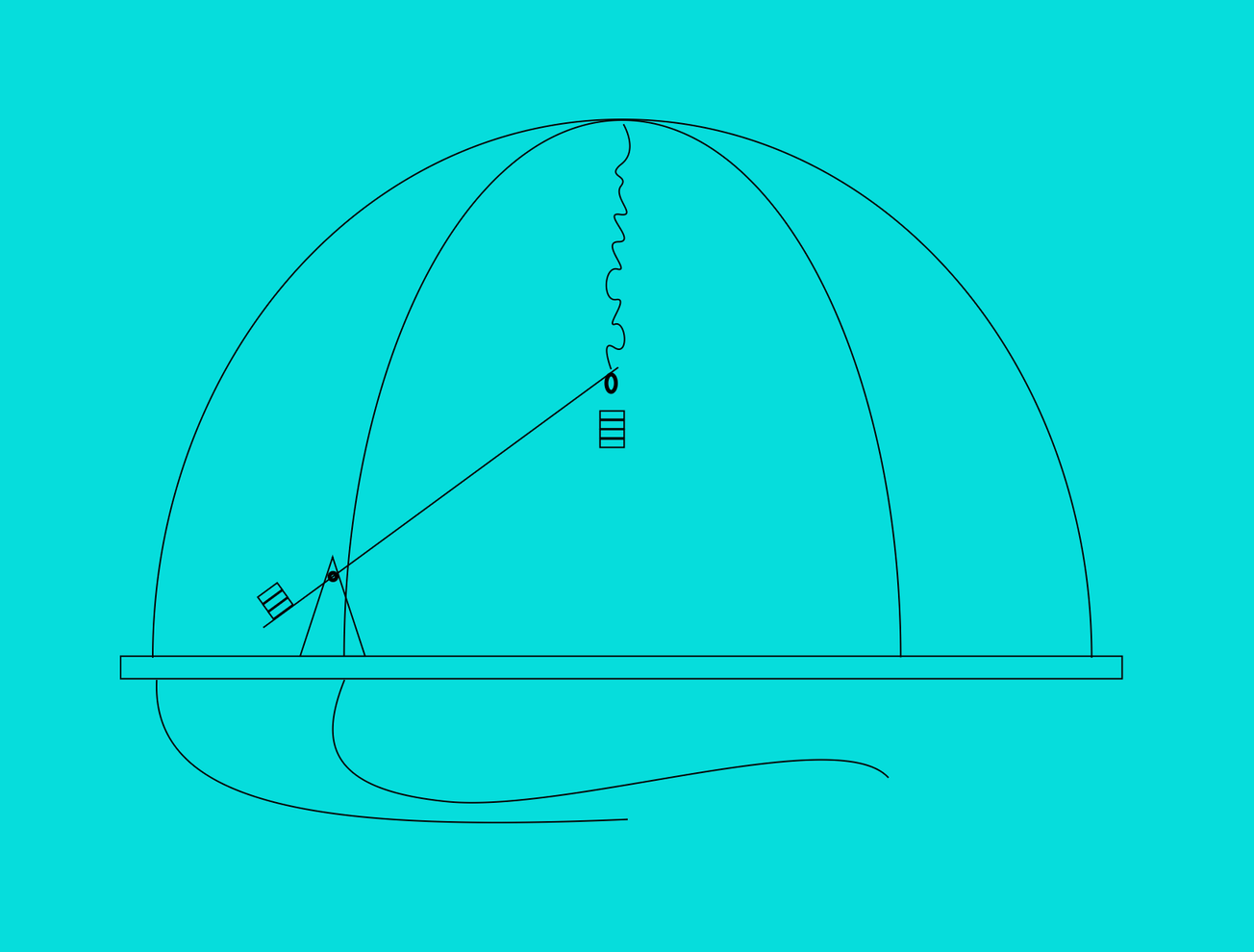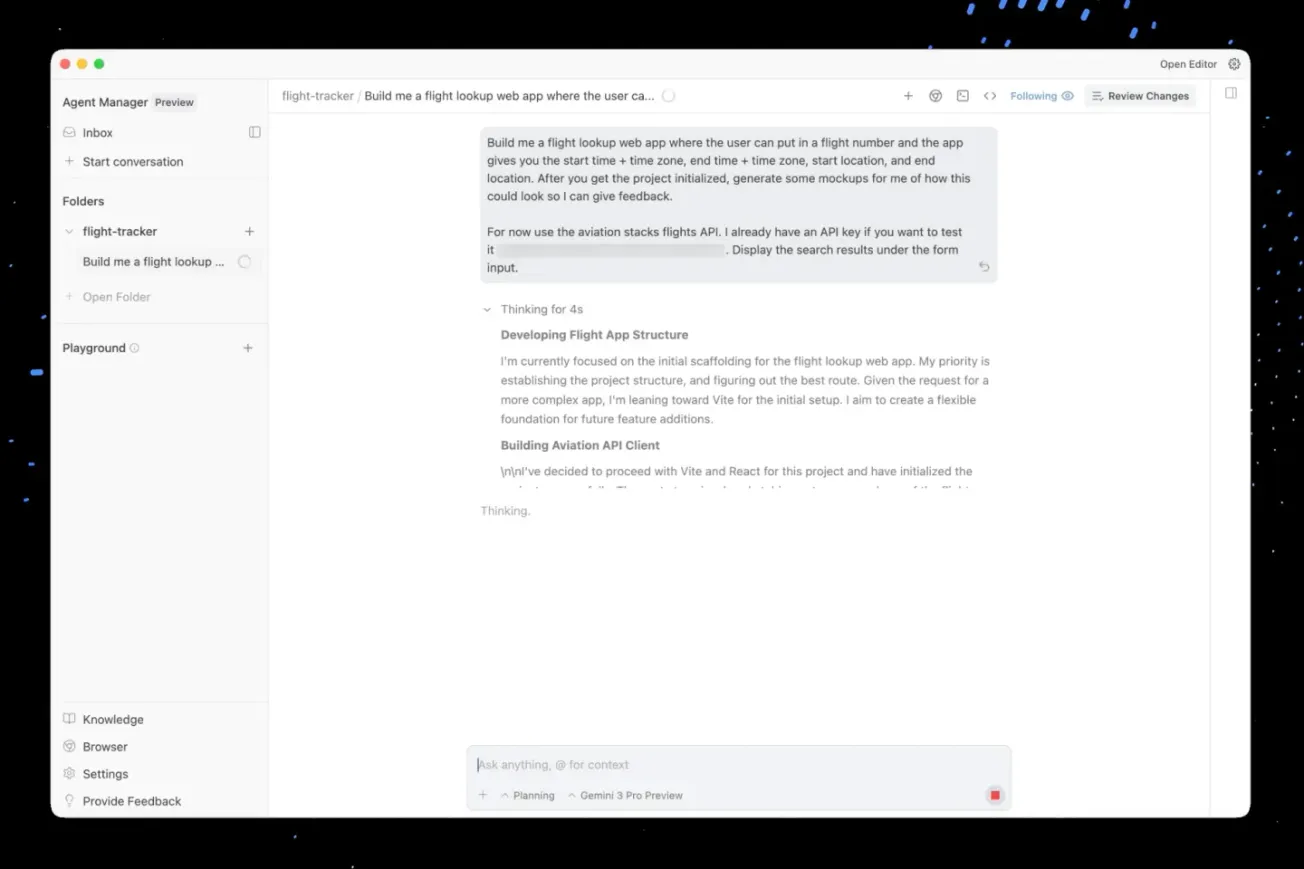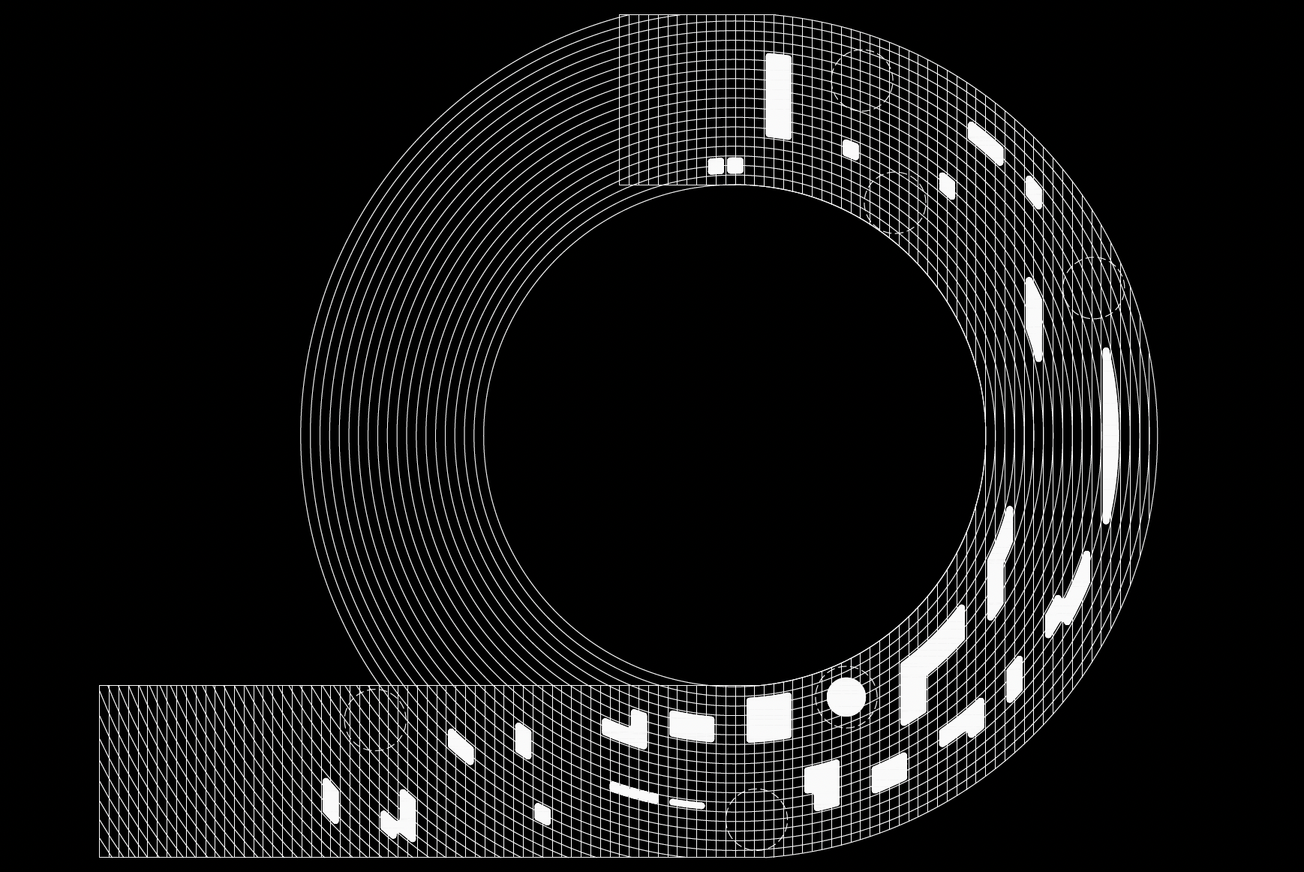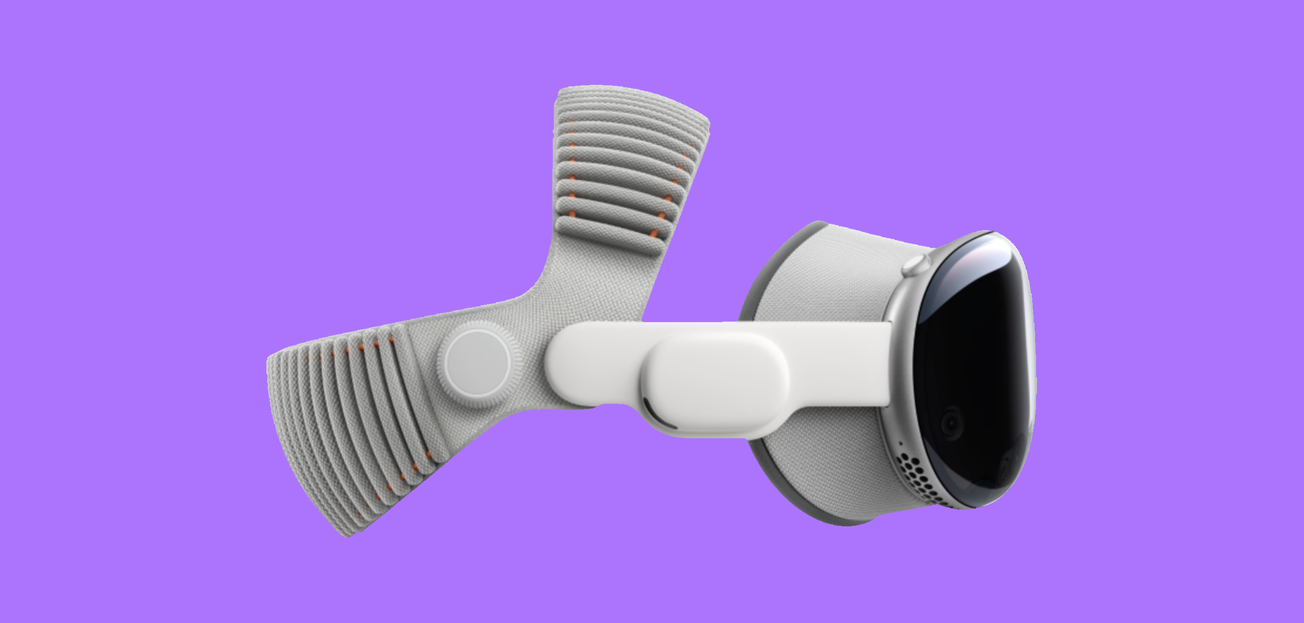Spend five minutes in any digital design showcase, and you’ll feel it: a swarm of formally complex, biomorphic, often uncanny objects and environments. Did they emerge from a Grasshopper script or a generative AI prompt? Sometimes you can’t tell—and that’s exactly the problem.
AI and parametric design may produce similar aesthetics—but their epistemologies, authorships, and implications remain fundamentally distinct. For artists, designers, and creative technologists already fluent in these tools, the challenge isn’t learning how they work. It’s clarifying what’s at stake in how we use them and how we frame their use to others.
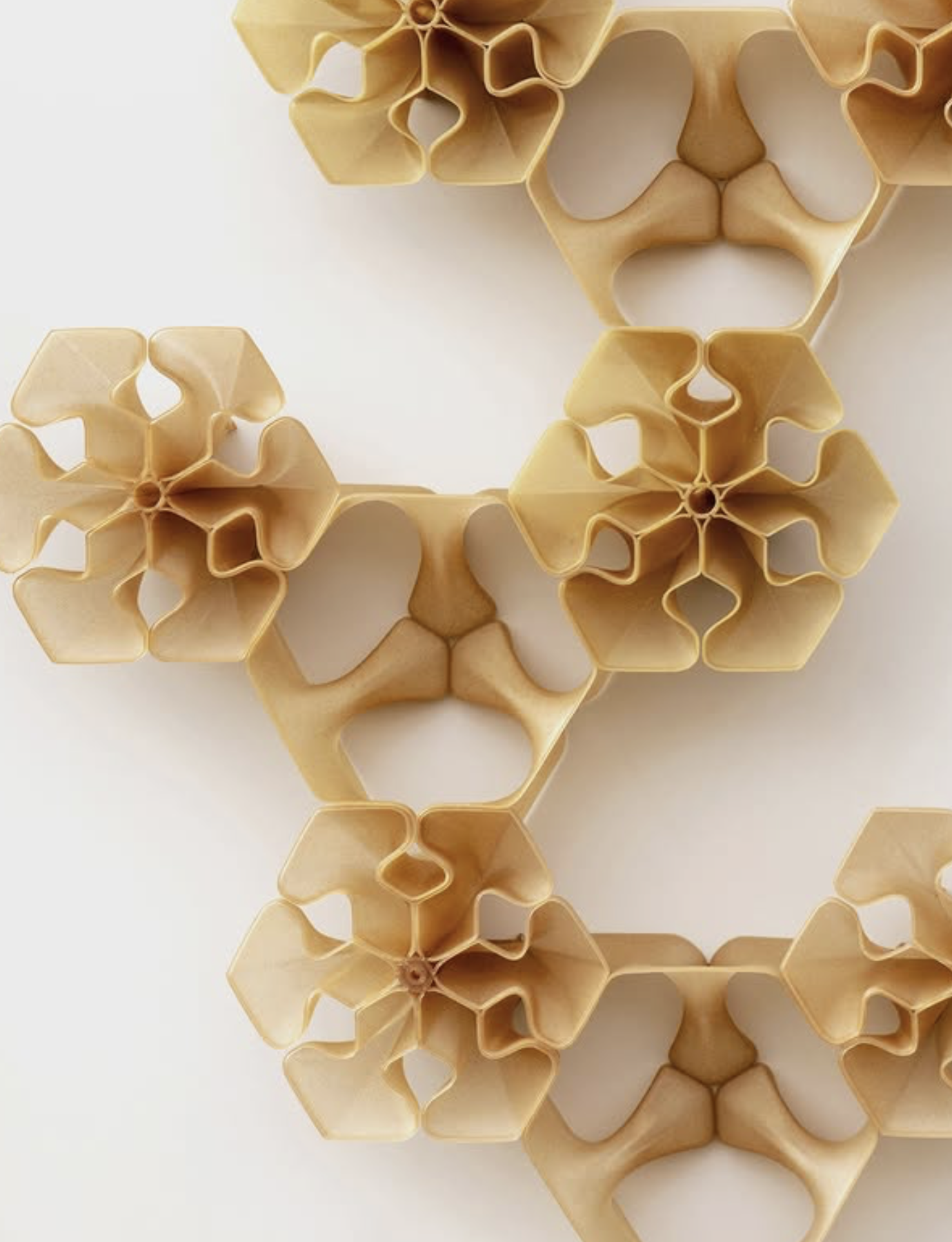
We’ve Hit an Aesthetic Convergence
Let’s acknowledge the obvious: parametric and AI-driven design are increasingly indistinguishable in form. Whether it’s recursive facades, textile patterns inspired by topological noise, or speculative cityscapes dripping with surreal logic, the output often lands in the same visual territory—what we might call high-complexity organic surrealism.
But while the outputs converge, the generative engines underneath are philosophically and technically divergent.
Parametric design is fundamentally deterministic. The designer authors a set of relationships, constraints, and behaviors. Change a variable, and the system responds predictably.

AI-generated design, by contrast, is probabilistic. The designer coaxes output through prompts, but the model infers the underlying logic from a massive corpus of visual data. What you get is a hallucination, not a calculation.
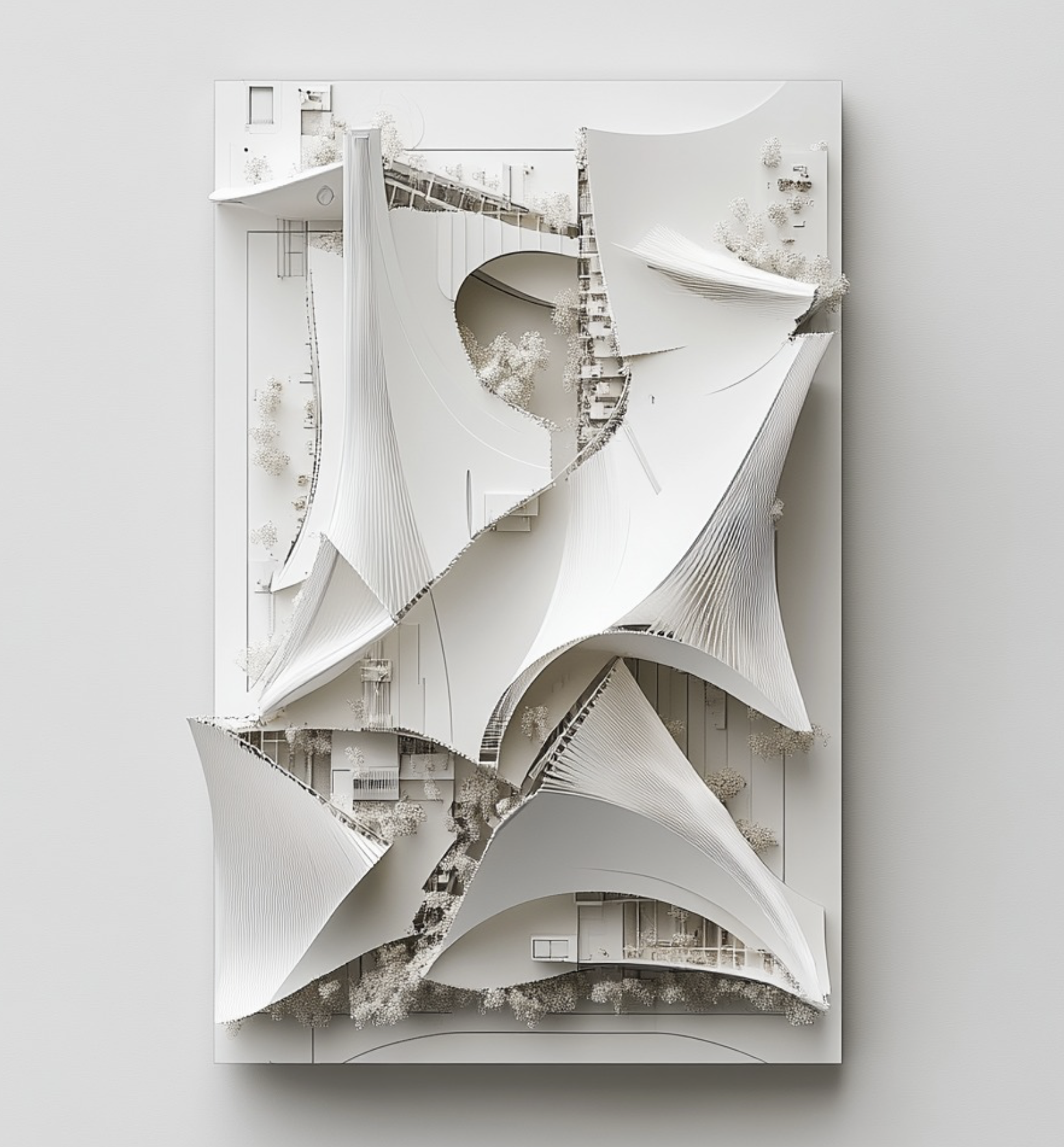
Why the Confusion Persists
Tool Hybridization, Disappearing Process
We’re now operating in mixed environments. Houdini nodes wrapped around AI-generated forms. Midjourney outputs brought into Rhino for parametrization. TouchDesigner patches feeding latent space interpolations into generative animations. The clean divide between code-based logic and data-trained intuition is dissolving. This tool fusion creates a false equivalence because workflows can be hybridized, and the logic behind them is the same. It isn’t.
In a world dominated by final renders, reels, and social media snapshots, process documentation has become scarce. Viewers—and even other practitioners—are often left guessing: Was this authored through a series of system rules or cherry-picked from 50 AI generations?
This opacity isn’t just a practical problem—it’s a conceptual one. When authorship is obscured, we lose sight of the values embedded in the process—intention, logic, ethics, and material potential.

What Parametric Still Offers (That AI Doesn’t)
Systemic Thinking, Predictable Outcomes, Material Intelligence
Parametric design demands a mental model. You architect the logic before you render the result. That logic can map to structural loads, solar orientation, textile elasticity, or cost optimization. It’s about setting up responsive systems that generate form with intention.
In parametric design, inputs are meaningful and repeatable. You can tune, debug, and reconfigure. That precision makes it ideal for workflows where control and iteration matter—architecture, product design, physical computing, and digital fabrication.
Because it often incorporates simulation, structural feedback, or fabrication constraints, parametric design is generally more buildable. It’s closer to engineering than speculation.
In short, it’s not just about the visual. It’s about viability.
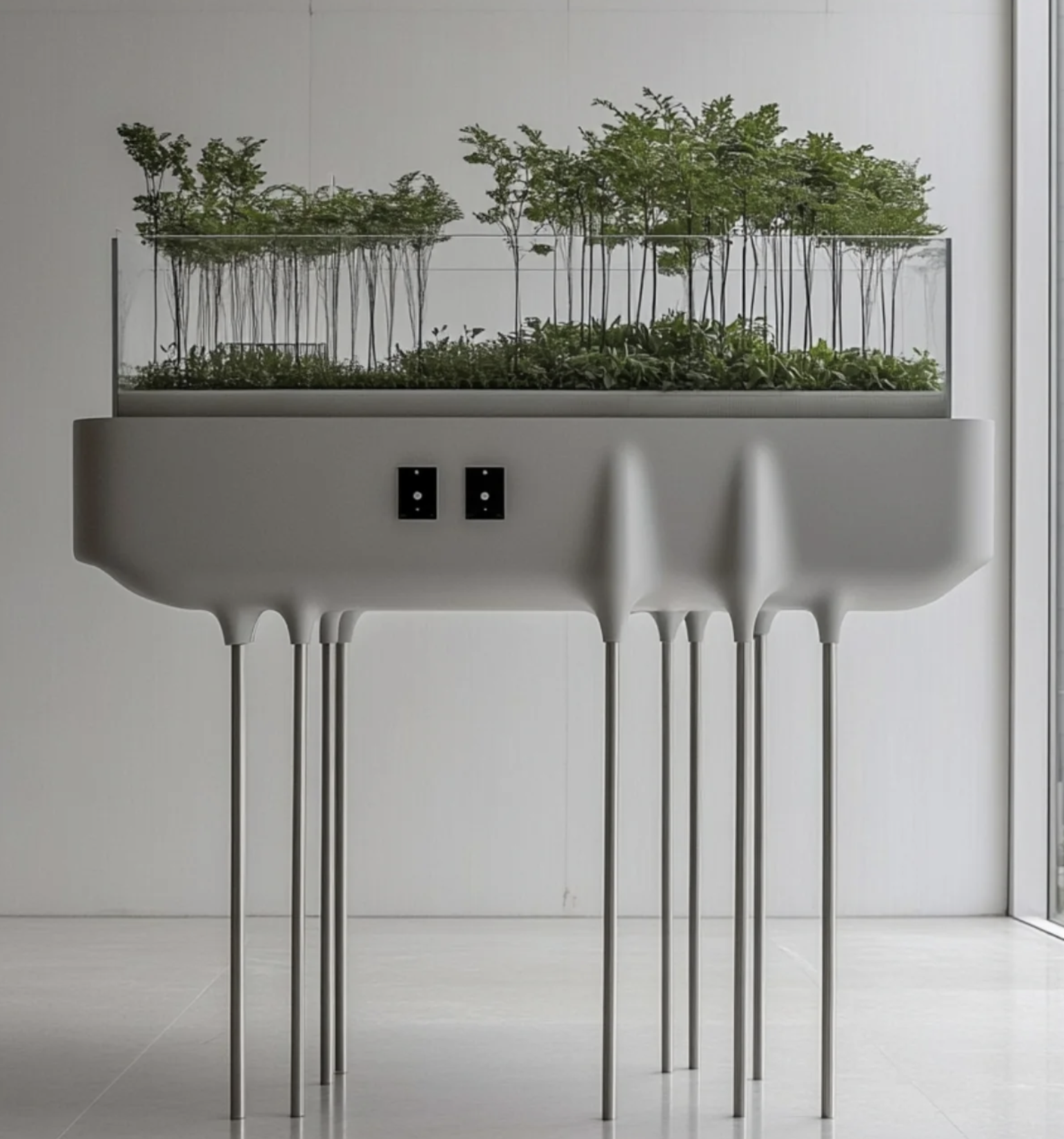
What AI Does That Parametric Often Can’t
Rapid Speculation, Aesthetic Synthesis
Generative AI excels at ideation at scale. Need 100 variations of a biopunk exoskeleton, each with slightly different traits? Done. Its outputs can be uncanny, hybridized, and deeply unexpected—a dream machine for speculative worldbuilding and visual storytelling.
Trained on enormous image sets, AI models understand aesthetic correlation better than most humans. They recognize the difference between Memphis and Bauhaus, between brutalism and vaporwave—not by rule, but by exposure.
This makes them especially valuable for concept development, narrative design, and experimental visual research.
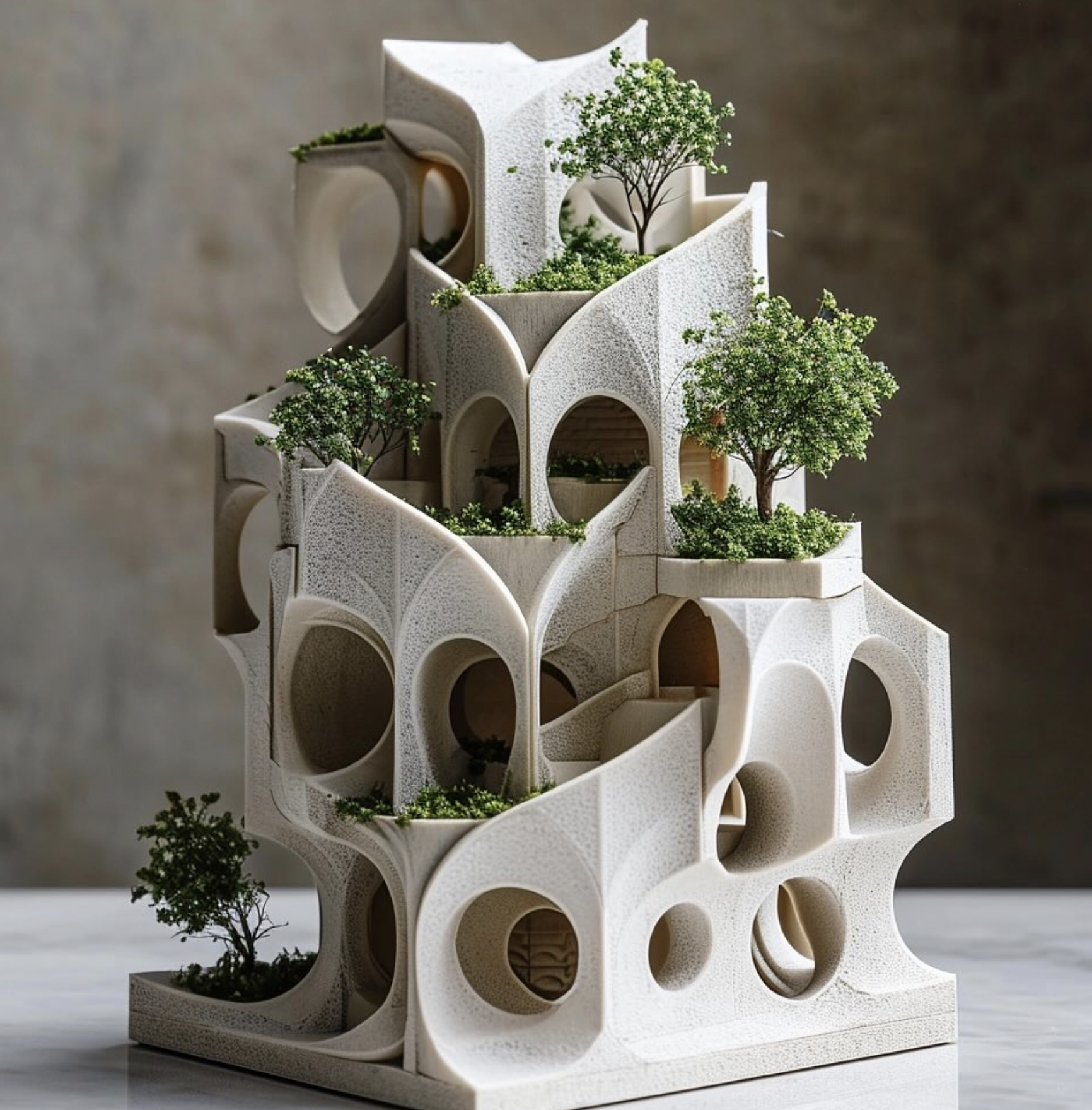
Why Process—and Language—Still Matter
Cognitive Approach, Authorship, Ethics, Visibility
We’re in an era of generative equivalency: the idea that all machine-made design is essentially the same. But this is a dangerous simplification.
Parametric design trains you to think like a system. AI design encourages prompt-based intuition. These are fundamentally different cognitive postures, and they shape how we understand the act of creation. Parametric logic is authored. The designer owns the relationships. With AI, authorship is shared with the model—and, by extension, with the anonymous artists, photographers, and designers whose work was scraped to train it. Parametric systems are ethically clean: the work is yours. AI tools often carry the baggage of data provenance, uncredited influence, and biased training. Artists using AI need to account for these ethical complexities—not just the aesthetic results. AI outputs are often conceptually rich but materially naive. They require human intervention to be made real. Parametric designs, on the other hand, can often be fabricated with minimal translation. This distinction matters in disciplines where design must meet constraint—fashion, architecture, product design—not just imagination.
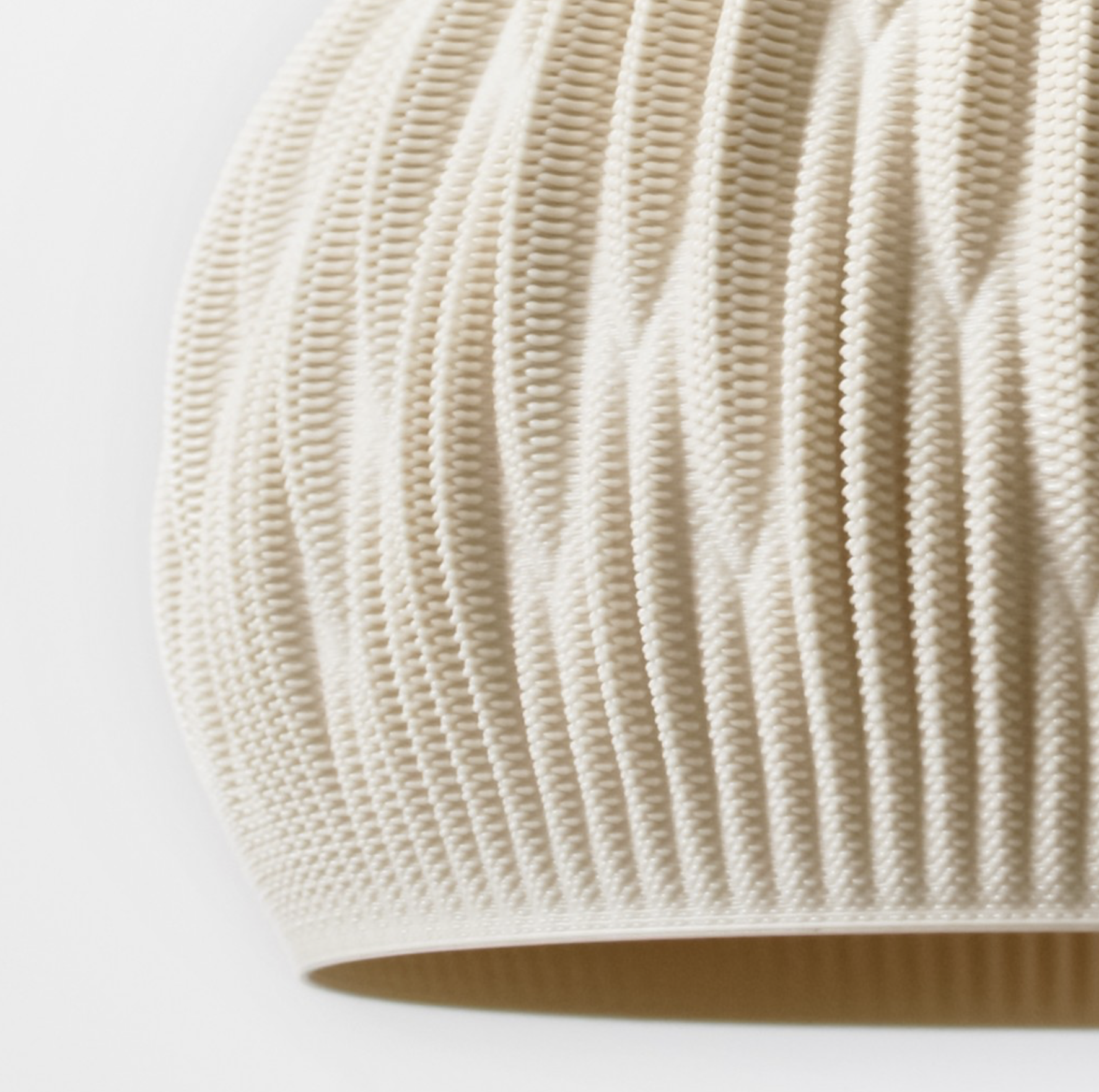
Hybrid Workflows: The Future is Neither/Nor
We’re already seeing the most compelling work emerge from fusion workflows:
- Designers use AI for fast ideation, then port the results into parametric environments for control, responsiveness, and realism.
- Parametric systems are increasingly augmented by machine learning—for behavior prediction, user feedback loops, or design optimization.
The tension between pattern and rule is giving way to productive interplay. But as the technical convergence accelerates, our language and frameworks need to sharpen. We need to be clearer about how work was made—not for gatekeeping, but for rigor, ethics, and creative clarity.
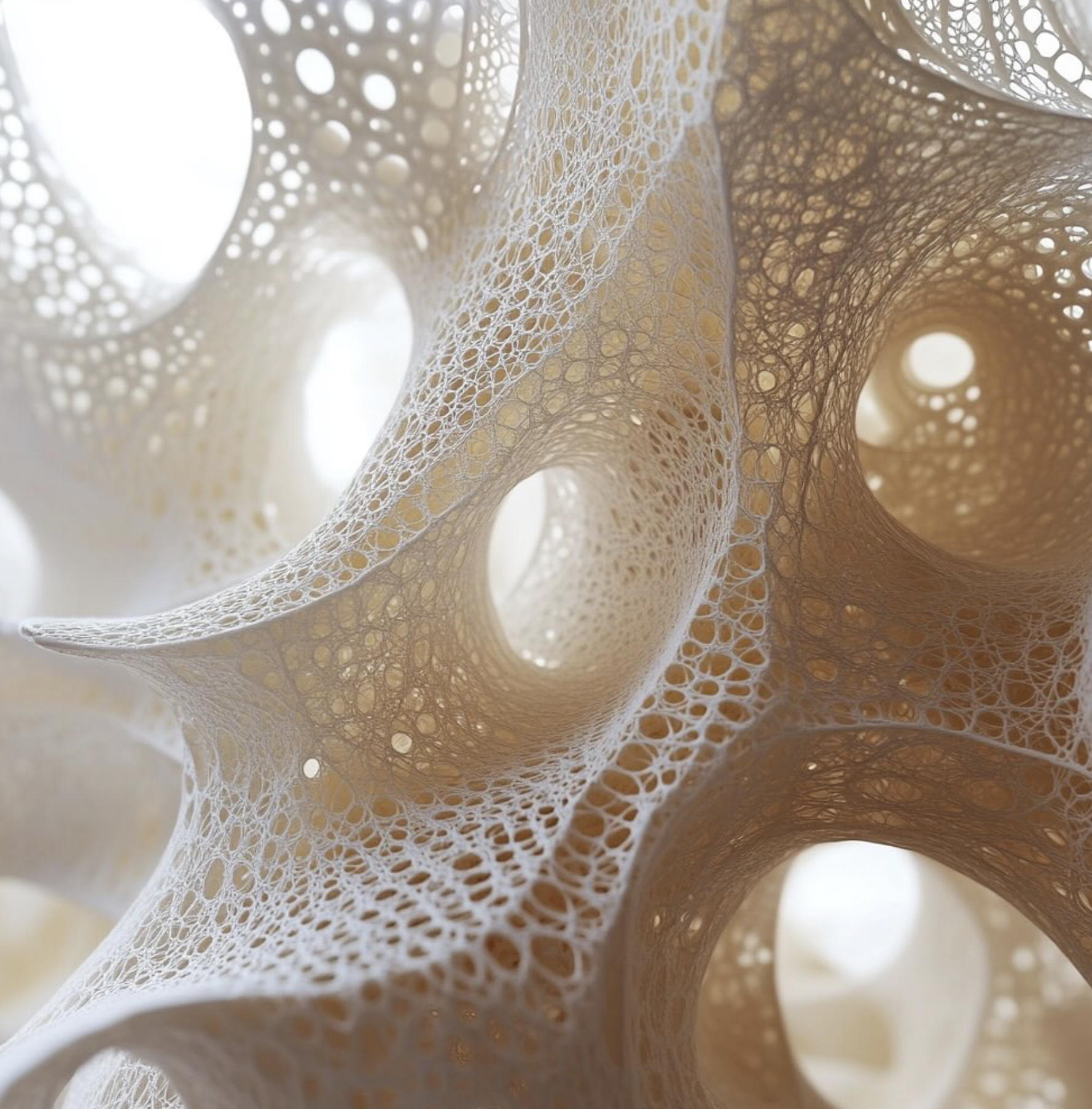
Bottom Line: Same Output ≠ Same Intent
Two forms may look the same. But one may be the result of a 500-line Grasshopper definition, and the other a well-crafted prompt and lucky seed. That difference isn’t cosmetic. It’s philosophical.
In the age of black-box design tools and visual noise, process becomes the anchor.
Not to fetishize craft—but to preserve intent, agency, and understanding.

